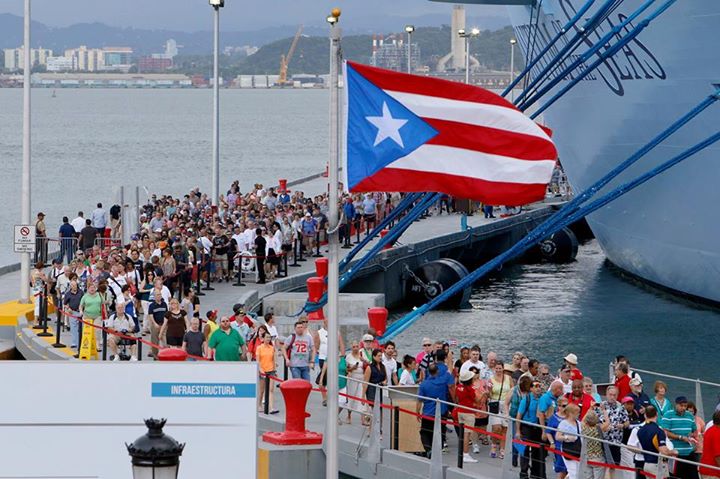 La Fortaleza de PR Photo
La Fortaleza de PR Photo
Renewable Energy in Puerto Rico: A Way Forward
Puerto Rico’s economy is laboring under the twin burdens of outsized debt and exorbitant energy costs. The island territory owes private creditors approximately $72 billion, but the inadequate energy infrastructure is just as serious a problem. The cost of living in Puerto Rico is naturally higher than the US national average, and no category is as dangerously lopsided as energy and electricity.
ASP has written about the importance of energy in Puerto Rico’s economy before, and will explore the issue in greater detail in a briefing note to be released soon.
Energy costs more than 2.5 times the average cost on the US mainland on a monthly basis, mostly as a result of Puerto Rico’s main fuel source. In 2013, 55% of Puerto Rican electricity came from petroleum, all of which must be imported. Though liquefied natural gas makes up a larger share of the energy supply than it did only a few years ago, Puerto Rico remains overwhelmingly dependent on imported oil. This is both an expensive and a dirty source of energy, the use of which is contributing to the island’s economic problems.
Puerto Rico Electric Power Agency (or PREPA) is the government-owned power utility. PREPA’s debt of more than $9 billion is the largest single portion of Puerto Rico’s $72 billion total, and poor management has led PREPA to neglect modernization and the potential of renewable energy. Only 1% of Puerto Rico’s energy comes from renewable sources, and the fossil fuel plants are decades out of date and built to serve a manufacturing industry that no longer exists. This results in a large amount of fixed production costs borne by the part of the population that does not receive subsidized rates.
According to Executive Director Julian Herencia of the Puerto Rico Renewable Energy Producers Association, PREPA is holding back progress on the limited number of renewable energy projects that have been permitted by requiring all of them to be renegotiated. Herencia explained how PREPA’s refusal to advance renewable energy projects is hurting the future of renewable energy in Puerto Rico:
“It’s regrettable that this is happening when we know that in addition to making a new investment that [PREPA] really needs, these projects will help meet the energy objectives with which [PREPA] must comply.”
Instead of starting construction, these projects are mired in an inefficient bureaucracy that is preventing compliance with legal renewable energy targets recently enacted by the Puerto Rican government.
If Puerto Rico is to solve its energy cost problem, it will need to embrace renewables. Unlike petroleum, natural gas, or coal, renewable energy could be produced on the island, reducing the expense of importing the entire fuel supply. In Hawaii, renewable energy supplements electricity generated from fossil fuels and provides approximately 13% of the state’s power. A Puerto Rican effort to match Hawaii’s level of renewable energy production – which would also meet the Puerto Rican legal target for the end of 2015 – would be an economic boon to the struggling territory.
Developing a renewable energy infrastructure in Puerto Rico would be a public investment. Construction of new power plants would employ local workers, and stimulate demand for US-produced energy equipment. As the proportion of electricity generated from expensive imported petroleum and other fossil fuels declined, the cost to consumers of Puerto Rican electricity would decline as well. This could stimulate demand in other sectors of the Puerto Rican economy by boosting residents’ disposable income, which would help the territory return to a path of growth.
Unfortunately, PREPA’s poor management and high debt burden make investment in a renewable energy future difficult. The ability to use the legal process of bankruptcy would help PREPA restructure debts into a more sustainable repayment schedule and free up funds for investment, but the agency also needs the right leadership. With proper conditions in place, renewable energy could be the key to Puerto Rico’s future economic development.







As resident of Puerto Rico I have been waiting for renewable energy a long time ago, I have done my part pushing this technology everywhere I go. But I am, as well as every living creature I now, for truly Renewable Energy, not fake renewable like trash to energy which is also non sustainable energy, dirtier than coal, high costs per Mega Watt, creates trash monopoly since they tie the communities through contracts for 30 years with automatic increases. The water consumption about 1k per ton of trash and their energy output is nil. They burn 88% of post consumer raw material to recover a mere 12%. It burns job opportunities as well as destroys the recycling industry in just a single act and lets not forget the tons of venomous particles their stacks spews over communities. In Puerto Rico the hydroelectric power is in shambles while everyone is turning to it as a solution. The wind energy parks has been politically chosen not scientifically selected. You are right we has to gamble to Renewable Energy everyone should but this is one of the hidden reasons to the lowering the prices of oil to make unfeasible the renewable energy cost wise. It happened already in the 70s when people start developing new forms of generating renewable energy once it was abandoned they get back to the high prices. It is now that we need to liberate our countries from fossil fuels for good. Incinerators depend on fossils fuels, plastic.